We may receive a commission when you use our affiliate links. However, this does not impact our recommendations.
I’m nearly done with my workbench project, I promise! I’ll break down the build soon with plenty of videos and explanations as to the whys and wherefores. I wanted to get the project done before I start sharing it because I hope it will enhance things a bit, seeing the finished article at the start that is. It’ll also give me some time to generate content for the next project with the finished article to show right at the start. Time will tell if that’s a good idea or not.
The downside is that in the short term my blog posts have been too infrequent for my liking. So here’s a simple process I’ve been using to check the accuracy of the bearers that support the bench top. String lines. Straight edges are clearly a good choice here too but if you don’t have one at hand, a string line can be a great help. With a light rubbing of chalk it can also be useful for pinging a straight line on live edge stock (or as I say it, “waney edge”).
Back to the process. Taking time on this stage of the process will pay dividends later when the top is attached, by reducing planing time to level things up. My first job was to ensure both leg frames were in the same plane and the top edges of the aprons were accurate. Winding sticks on the leg frames and a keen eye down the length of the apron ensured a good foundation. Then, pull a string line from leg frame to leg frame, nice and tight across the bearers, and also across the diagonals to help highlight any error. Just put your eye to the string line and it’s like eyeing down a full length of timber.
Make sure the string lines are not fouling up each other as well. At the diagonal intersection, lines do straddle each other so do ping them a touch. You should be able to see when everything is good. This method is something I’ve used to level floor joist but without the added diagonal check. Although this method is perhaps more suited to the job site on large projects than in the home shop, such as a workbench, I found it useful.
My string line of choice is a “Builders Line.” I’m not sure what it is exactly, but I guess it’s nylon or a heavy duty polyethylene. It is available to me for about three or four pounds here in the UK, and I assume it’ll be an equally good value regardless of geographical location.
Here are some supplies and tools we find essential in our everyday work around the shop. We may receive a commission from sales referred by our links; however, we have carefully selected these products for their usefulness and quality.



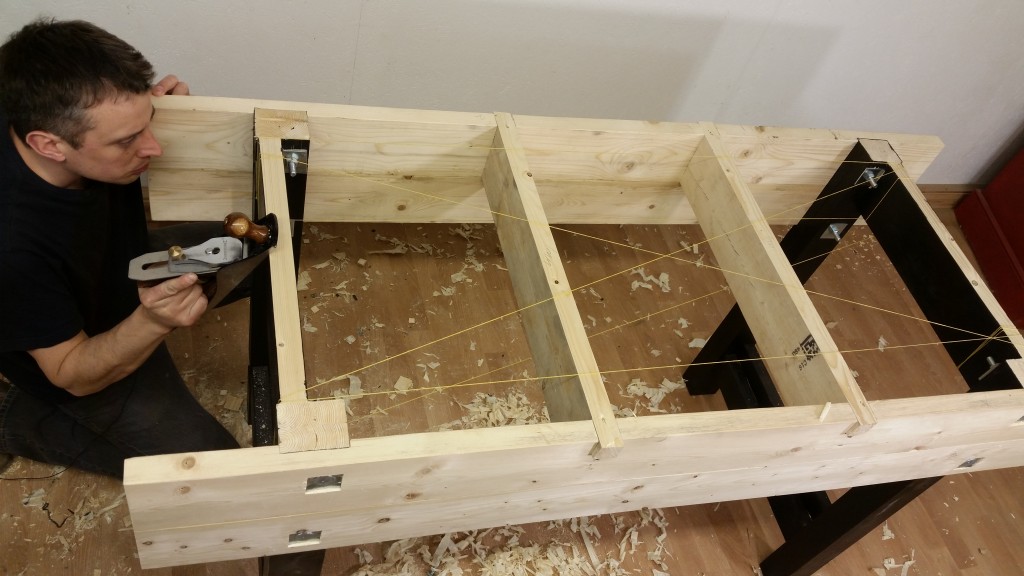
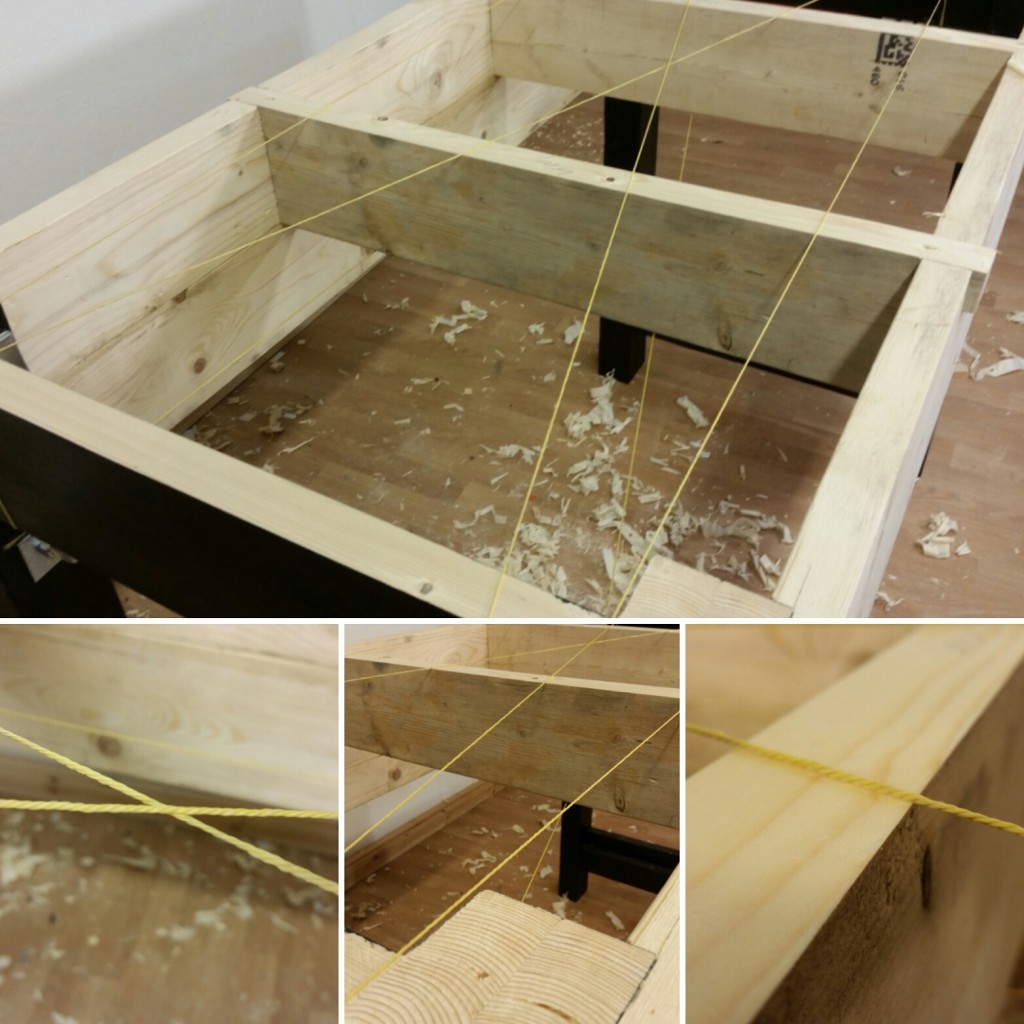
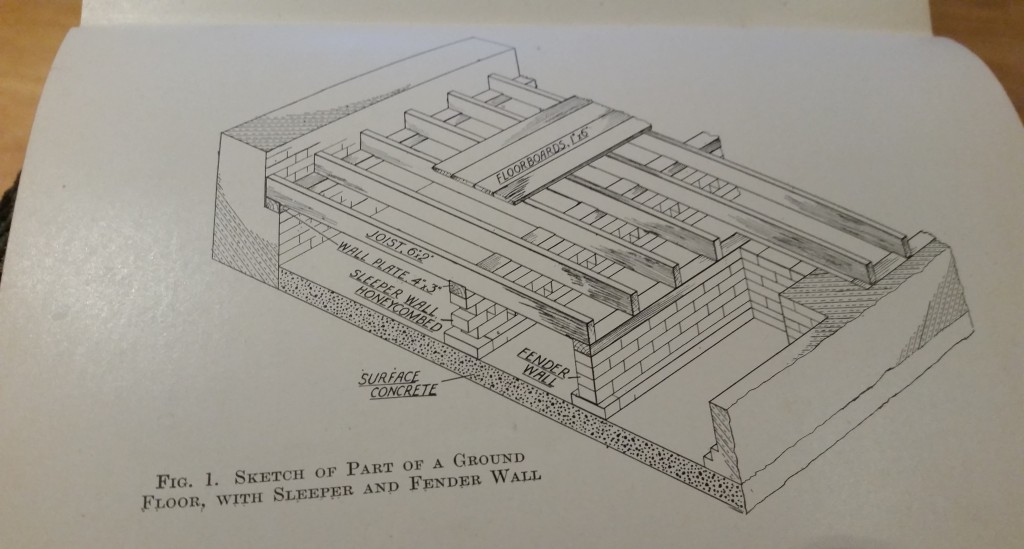
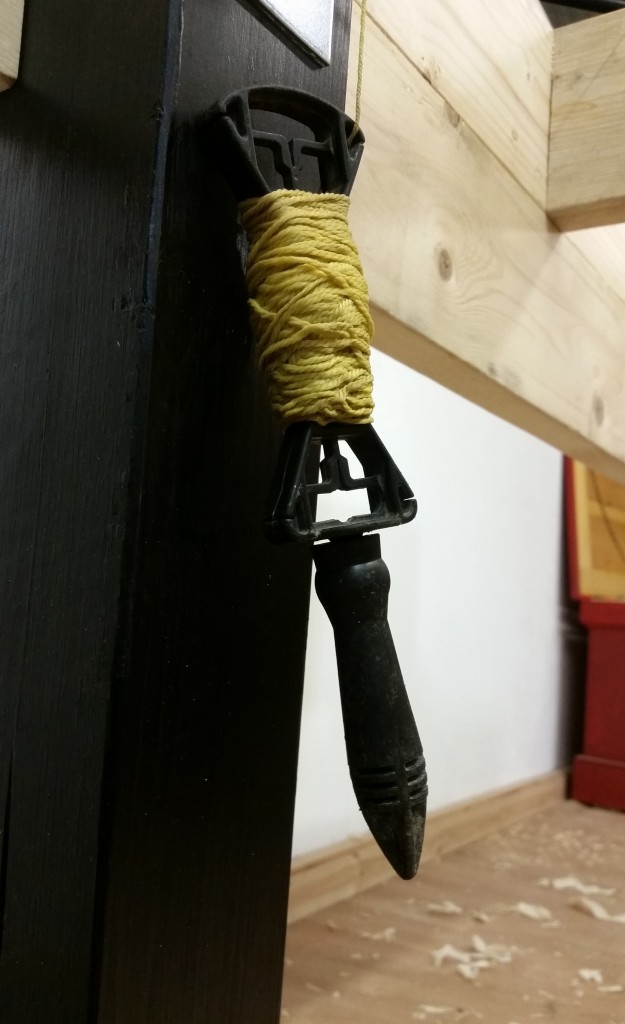





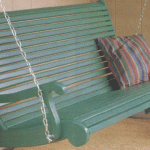
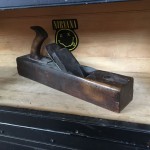
A good “string” to use is a spool of UHMW PE fishing line. (For those who don’t know, UHMW means “ultra-high molecular weight” and PE is polyethylene. The fishing line is braided, very light weight, very small for a given tensile strength, and stretches very, very little.
Low stretch makes the string trick much easier.) Tensile strength is high enough that the cheapest available – probably the thinnest available too – will be fine in most cases. When tensioned across a structure as shown, the low stretch properties minimize sag and enhance the procedure.
Such braid is also available in larger sizes than fishing line in marine supply sources, private and commercial, up to towing hawsers for ocean tugs. There are many other uses. These are the ones I know about.
One way to deal with the crossing lines in this situation is to use pins (nails) and then when setting the top line, wrap a loop around the nail first (raising it by one string thickness.) Then when they just touch, everything is in the same plane.
This is not ideal if you must remove the nails to plane, but handy if adjusting parts with mallets etc. to be in plane.